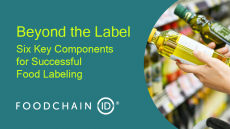US assesses financial implications of salmonella
assessments in order to help manufacturers tackle the problem of
salmonella in pasteurised shell eggs and egg products.
Developed by the US department of Agriculture's Food Safety and Inspection Service (FSIS), the soon-to-be released documents aim to provide scientific information that the agency can use to develop 'pathogen reduction lethality performance standards' for pasteurised shell eggs and egg products.
The first risk assessment is a quantitative analysis of Salmonella enteritidis in shell eggs and the second is a quantitative risk assessment of Salmonella in pasteurised liquid egg products.
An outbreak of Salmonella bacteria can cost manufacturers millions in terms of product recalls, law suits and loss of consumer confidence. And while most foodborne diseases are sporadic and often not reported, foodborne disease outbreaks can sometimes take on massive proportions.
In 1994 for example, an outbreak of salmonellosis due to contaminated ice cream occurred in the USA, affecting an estimated 224,000 persons.
A working group on salmonella infection at the US government FoodNet body claimed in 1999 that estimated annual costs (in 1998 dollars) of medical care andlost productivity due to foodborne Salmonella infections were $0.5 billion (€0.4bn), based on the human capital approach for calculating forgone earnings. Using the less conservative labour market approach, the total annual costs were $2.3 billion (1.85bn).
"Economists have not reached a consensus about the best method for determining the costs of illness. Both approaches undervalue the social costs due to foodborne Salmonella infections, omitting medical expenses and the value of lost productivity due to secondary complications such as reactive arthritis and other costs due to pain and suffering, travel to obtain medical care, time lost from work caring for sick children, andlost leisure time," writes the group.
Estimated medical costs for foodborneSalmonella infections were $118 million under both approaches, with two-thirds of these costs due to hospital care.
A public meeting on 22 October aims to provide a forum to discuss the technical design and assumptions that were used to create these draft risk assessments.
FSIS inspects and regulates meat and poultry products and processed eggs (eggs that have been removed from their shells for further processing) produced in federally inspected plants.
But in industrialised countries, the percentage of people suffering from foodborne diseases each year has been reported to be up to 30 per cent and in the US, for example, around 76 million cases of foodborne diseases, resulting in 325,000 hospitalisations and 5,000 deaths, are estimated to occur each year.














